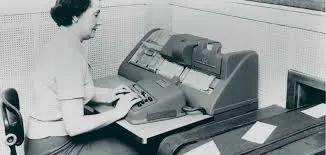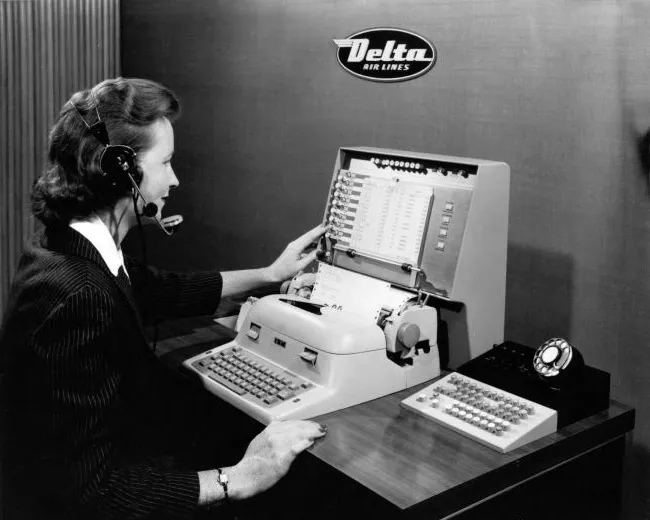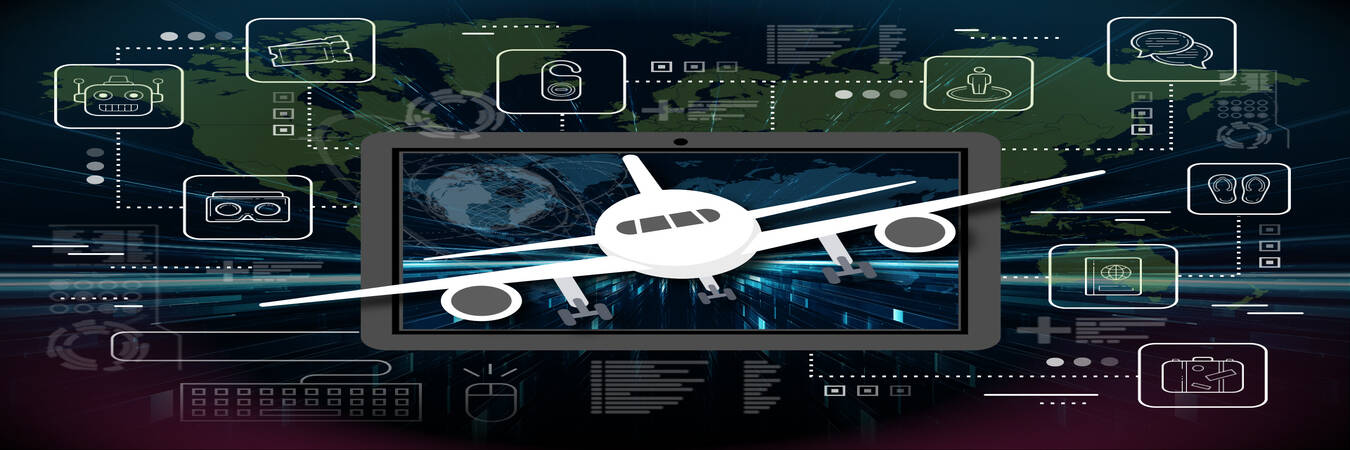Travel Portal Solution is a pioneer name in the travel technology industry. As a leading travel service provider, we offer airline reservation systems with API integration of GDS like Travelport, Amadeus, Galileo, Sabre etc. We also provide airline reservation systems with third party API integration like Travel Boutique Online, Yatra Akbar Travels Online etc.
How to transform an unaggressive business into a fierce competitive one? By exercising monopolistic strategies and utilizing the latest industry trends and tools. The travel market requires businesses to take a paradigm shift from maintaining manual inventory to a digitalized airline reservation system, and collaborate with new distribution channels.
Prior to airline reservation system travel technology and travel portal development delegates used to visit, call, or send the message through teletypewriter for a booking request in the airport or ticketing office. Reservations were processed manually. Moreover, a team of operators was required to make an airline reservation. Operators sat around a circular table with cards. Each card corresponded to a trip between specific city-pairs; they were ticked manually by the operator against a booking. Cards were then organized according to departure dates and stored in tubs that were rotated among various reservation agents as necessary. This whole airline reservation process took approximately 2 hours. As the process was unwieldy it led to errors; booking of two passengers on one seat or under booking which caused distress and inconvenience.

After the 1950s the airlines started experiencing an increase in demand for flight booking. And the strenuous airline reservation process was a challenge to cater to amplifying demand. To make the process efficacious the airline had to rework on the internal airline reservation system. But to develop and operate the automated systems was quite expensive.
American Airlines saw this coming and developed a semi-automated computer airline booking system. The system showed the flight schedules, details, and seat availability. But the airline reservations were still a manual process, needing an agent to call the ticketing office and talk to the operator and put the paper in a device with necessary details.

Computer Reservation System Definition: An airline reservation system that gives travel agents access to information about flight schedules, fares, and seat availability. It also enables them to make airline reservations and issue tickets automatically. Later on, it was used for booking hotels, car rental, and other activities.
Considering the mushrooming demand the airline still needed amendments in the airline reservation system. The idea of creating the first computer airline booking system was born after the meeting of the president of American Airlines and a salesperson of IBM on an American flight. After learning lessons from a similar project SAGE (Semi-Automatic Ground Environment) air defence computer system, IBM moved forward with the American Airlines project.
American Airlines named the project SABRE (Semi-Automated Business Research Environment). In the mid-1960s the development of SABRE was completed and at the initial stage, only two IBM 7090 computer systems were installed in New York. The company gained a first-mover advantage after introducing it. American’s SABRE revolutionized the airline industry by handling 84000 transactions per day. The average time for the airline reservation was reduced to seconds.
But till now, the operators of American Airlines only used to make the airline reservation after receiving the requirements from agents.

SABRE created a monopoly in American Airlines reservation system automation, which forced other airlines to also have their own computer reservation system. The success of SABRE nudged IBM to have its own system to market to other airlines. IBM developed PARS (Programmed Airline Reservation System).
After American Airlines, United, Delta, Transworld, and Eastern followed with their own system. Airlines approached IBM, as the basic reservation process was the same, airlines adopted PARS with some customization. In 1964 IBM built PANAMAC for Pan American, which offered flight and hotel reservations. Next year, in 1965, Eastern Airlines launched System One, then Delta Airlines launched DATAS II in 1968. United Airlines built the Apollo reservation system and Trans World Airlines came up with PARS customization in 1971.

American and United, however, dominate the CRS industry; in 1986, they accounted for 41 percent and 33 percent, respectively, of the flight segments booked through computer reservation systems.
As the agents were not having any access to the airline reservation system the process was still manual. The agent had to call for reservations and operators had to keep manual entry, provide flight information and seat availability details.
Now, the airlines want to give direct access to their inventory so that agents can book by themselves to increase productivity. In 1976 American and United started selling their airline reservation system to the travel agents on a long term contract with monthly subscription fees.
The agent had to pay for an airline booking system and didn’t get options to choose from. This was a disadvantage of the computer airline reservation system to the travel agents.
The airlines started offering the airline reservation system to the travel agents. The agents would get a commission on each booking made on the airline booking system. And as the agent generally purchased access to one airline reservation system, the agent would recommend his client to opt for that particular airline. Generating profit and destroying the competition of other airlines on agents’ recommendations to their clients were advantages of the central reservation system to the particular airline.
In 1978 American felt it was losing market share to United due to the greater breadth of United’s route structure. American’s response was to co-host the program with other airlines of those destinations, where American flights weren’t available. The carriers paid a fee but the motive was to increase the presence of SABRE in the markets where American wasn’t serving. United also introduced its co-host program to hold the agents. Co-hosting was advantageous for airlines not having their automated airline booking system. Delta made a deal with United APOLLO to protect the market from SABRE.
In 1978 when the U.S. government lifted restrictions on fares, route coverage, and market entry. Undoubtedly, new opportunities and threats entered for airlines after the deregulation act. No approval required of the Civil Aeronautics Board to enter and exit new city routes. The airlines could enter or exit with 90 days’ notice. The airlines started adding new city pairs having high traffic and dropping with less traffic.
Without regulatory price controls now the airlines started changing the fare frequently. Now the customer started inquiring about the best fare instead of seat availability. This made it mandatory to be available with the best option for travel agents.
By the late 1970s, other carriers recognized the power of the airline reservation system. Some airlines were afraid that if SABRE or APOLLO installed travel agencies on their market it could eat their market.
American and United intensified the distribution and features of their airline booking system, it made travel agencies to increase business and productivity. Now more airlines started to join the co-host program of American and United.

Creating their own computer airline reservation system was an expensive process for airlines, so other airlines enrolled in the popular computer reservation system. Registration of rival airlines raised the competition for computer reservation system owners. The CRSs owners started practising the anticompetitive practices such as screen bias, hiding the facilities provided by rival companies, and unjustly charging from rival airlines to increase the sales.
As a result, Airlines alleged the CRSs owner for practising anti-competitive actions. The justice department began to investigate and found enough proof to state that the computer reservation system providers are practising anti-competitive practices.
Civil Aeronautics Board deduced CRSs giving preference to host airline on first screen irrespective of relevancy, hiding the services of rival airlines to divert booking in favour of airline reservation system owners.
In 1984 Civil Aeronautics Board set rules to eliminate display bias and prohibit the unjust charges demanded from other airlines. CAB ordered to have uniform booking fees.
Earlier the American and United fees ranged from zero to three dollars per segment, allowing many carriers free of cost to publish. But, after the regulation, American charged $ 1.75 and United charged $1.85 per segment from all airlines. This significantly raised the revenue of CRSs. American and United’s computer reservation systems were anti-competitive weapons, some airlines concluded.
The largest carrier didn’t sit idle awaiting the result of antitrust actions results. Because the market was changing frequently so they had to prepare for the future or else watch their airlines shutting down.
European airlines worked on their own airline reservation system. Since the beginning of the 60s, there were two CRSs: CORDA by Dutch KLM and SASCO by Scandinavian that operated across Europe. Amadeus, another European GDS emerged in 1987, founded by Lufthansa, Iberia, SAS, and Air France. Amadeus originated from Amadeus Germany, a company that provided travel technology for the airline industry.
In 1987, nine leading European carriers including British Airways, KLM Royal Dutch Airlines, and Aer Lingus formed Galileo GDS. It became one of the largest European GDSs, absorbing the following year Travicom GDS, to form Galileo UK. In 1992, Galileo merged with US-based Apollo systems, emerging as Galileo International.

In 1992, the DOT (Department Of Telecommunication) addressed gaps in the Civil Aeronautics Board’s 1984 rules. The DOT compelled competing and non-competing airlines to participate in CRSs. Five years later DOT added a parity clause. The airline must share the same inventory with all the airline reservation system.
After the emergence of the internet, The GDS started offering online access to airline reservation systems. GDS also helped travel agents to build their own travel portal using Travel API.
The concept of E-ticketing and Online Travel Agency (OTA) emerged as a by-product of the Internet. Sabre launched Travelocity in 1996, and Worldspan also provided content for Microsoft’s Expedia startup that same year.
Have a Project?
The earlier process is well explained above. Currently, airlines manage their own inventory and connect it with the GDS system.
To create an airline reservation system you need to take an API from GDS and LCC API if applicable. API integration of these systems will create an online airline reservation system.
The airline reservation system is an online reservation system. It lets you check real-time inventory, rates, and other flight details to book a ticket.
Travel Portal Solution is the best company to get any kind of travel portal development. You can get an airline reservation system project developed in java, PHP, .net, node, or angular.
A Reservation System that gives travel agents access to information about flight schedules, fares, and seat availability. It also enables them to make reservations and issue tickets automatically. Later on, it was used for booking hotels, car rental, and other activities.


